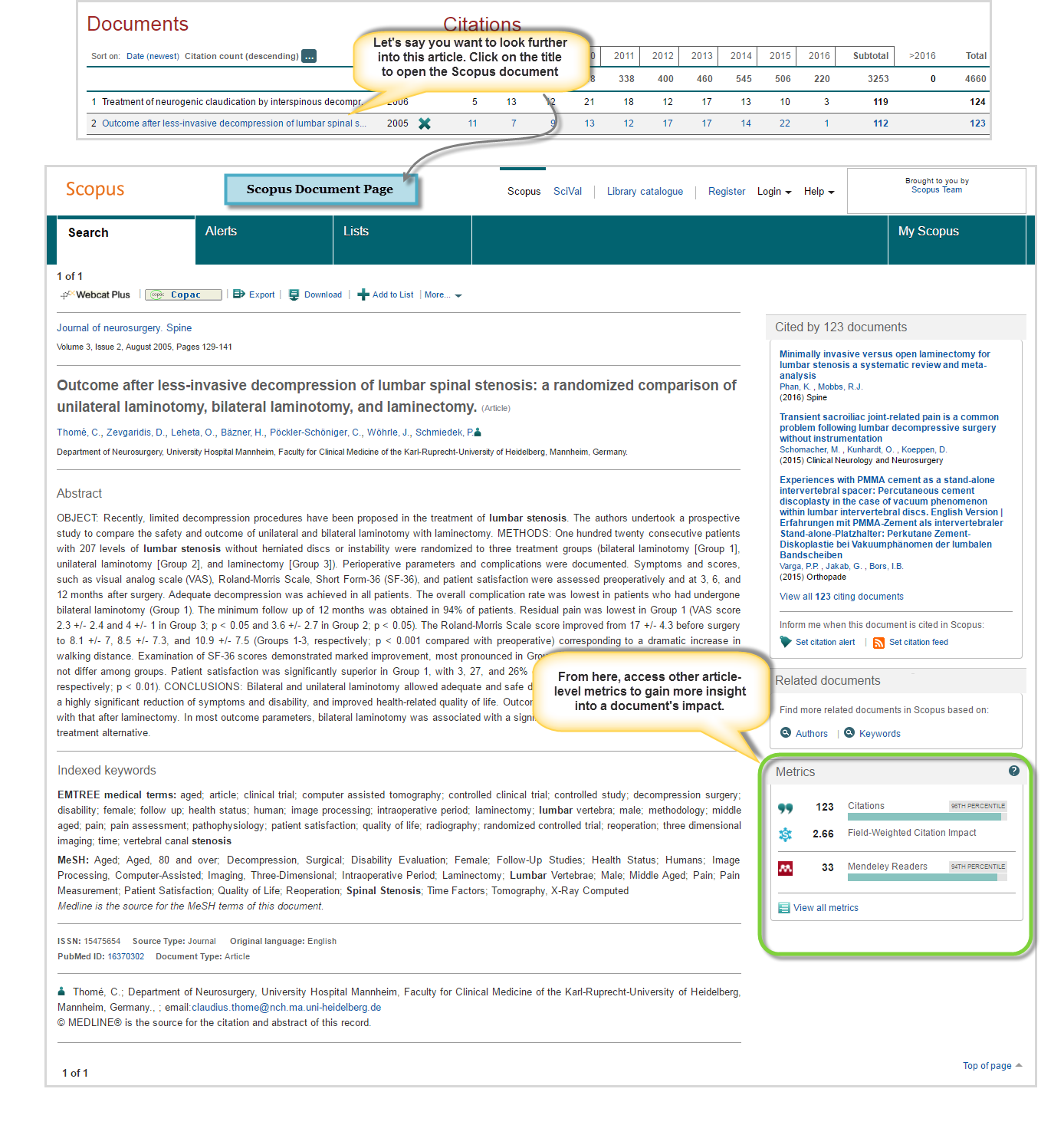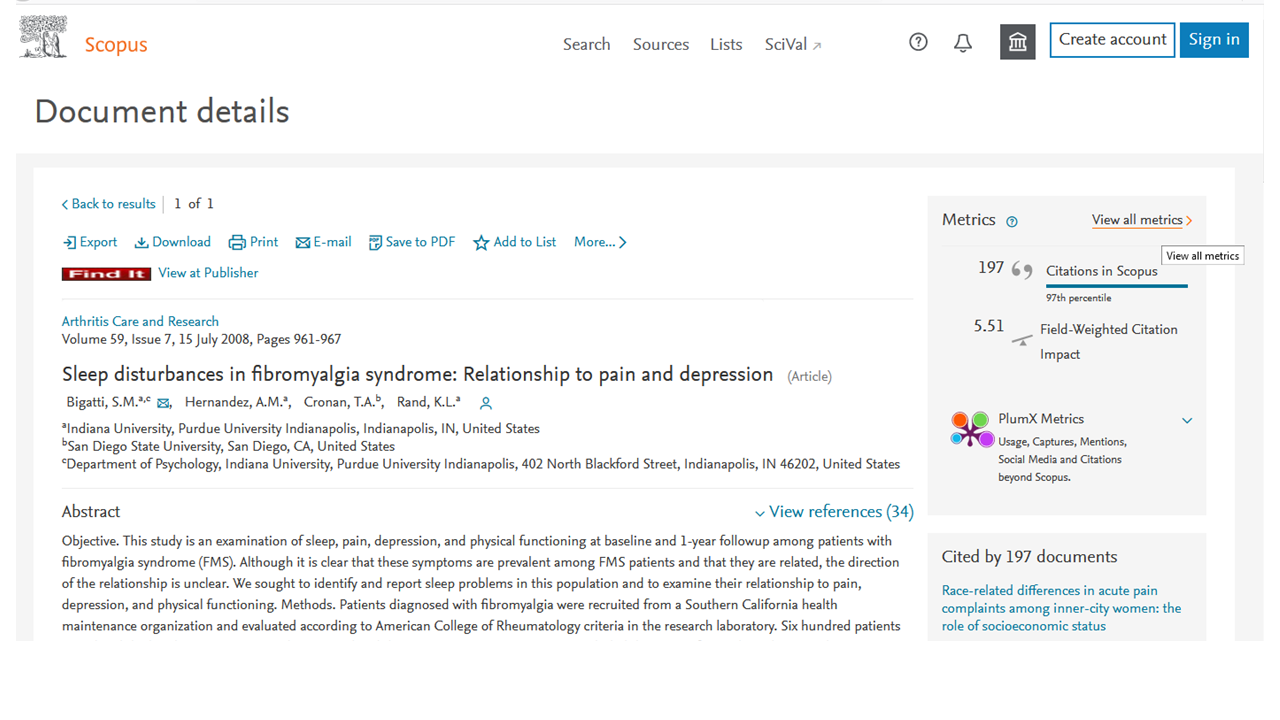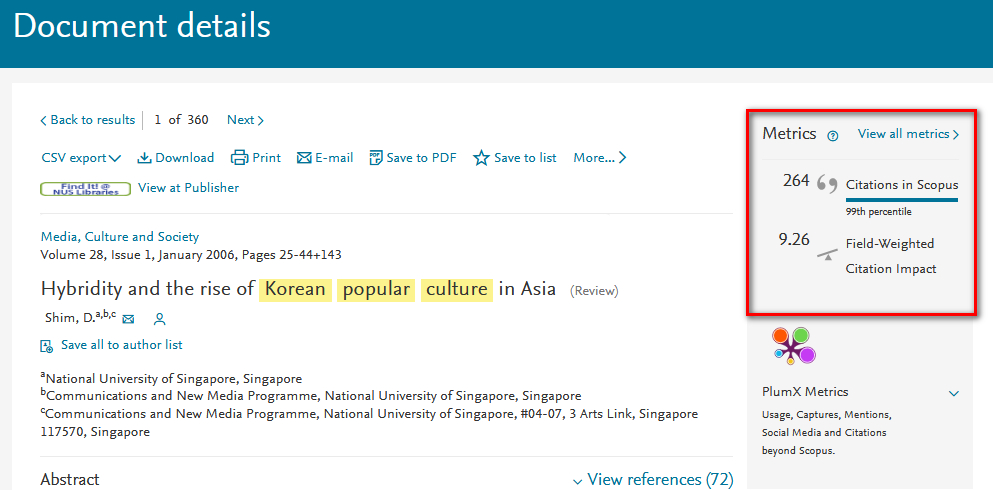Field weighted citation impact scopus information
Home » Trend » Field weighted citation impact scopus informationYour Field weighted citation impact scopus images are ready. Field weighted citation impact scopus are a topic that is being searched for and liked by netizens now. You can Download the Field weighted citation impact scopus files here. Get all royalty-free vectors.
If you’re looking for field weighted citation impact scopus pictures information related to the field weighted citation impact scopus keyword, you have come to the right site. Our site always provides you with hints for seeking the highest quality video and picture content, please kindly search and find more informative video content and graphics that fit your interests.
Field Weighted Citation Impact Scopus. (fwci) score comes from the scopus. Article performance can also be measured by comparing the article in question with the average article within the same field or journal. Plumx metrics provide insights into the ways people interact with individual pieces of research output (articles, conference proceedings, book chapters, and many more) in the online environment. Sourced from scival using scopus data.

Understanding societal impact just got easier: We added the un sdgs to the document details page. Plumx metrics provide insights into the ways people interact with individual pieces of research output (articles, conference proceedings, book chapters, and many more) in the online environment. Article performance can also be measured by comparing the article in question with the average article within the same field or journal. Fwci is a unique metric that is only available via scopus/scival and is. Fwci is a citation (mean) average calculated as the ratio of the citations a paper or set of papers has received and the total citations that would be expected based on the average of the subject field (for documents of a similar age, discipline and type).
Go to the scopus database;
The latter is referred to as the expected number of citations. Understanding societal impact just got easier: To get an articles�s fwci: An entity can be an institution, a research group or an individual researcher. It is the number of citations received by a document divided by the expected number of citations for similar. The field normalized citation impact (fnci) is the ratio between the actual citations received by a publication and the average number of citations received by all other similar publications.
 Source: scopusjournals.info
Source: scopusjournals.info
Go to the scopus database; It can be used to directly compare/benchmark the performance of an article against other articles (even in different subject areas) because it is normalized. Article field weighted citation impact (fwci) what. Sourced from scival using scopus data. Citation impacts normalised by the field, like the fwci, indicate how the number of citations received by a researcher’s publications compares to the average or expected number of citations received by other similar publications.
 Source: unimelb.libguides.com
Source: unimelb.libguides.com
Article field weighted citation impact (fwci) indicates how the number of citations received by an article compares to the average or expected number of citations received by other similar publications. Article performance can also be measured by comparing the article in question with the average article within the same field or journal. Cons • citations are weighted based on the source that they come from. Author field weighted citation impact: Using the article�s title, find the record for that article in the database

The field normalized citation impact (fnci) is the ratio between the actual citations received by a publication and the average number of citations received by all other similar publications. A journal’s sjr is the average number of weighted citations received in a year divided by the total number of publications in the past three years. Sourced from scival using scopus data. A fwci greater than 1.00 means the article is more cited than expected according to the average. Cons • citations are weighted based on the source that they come from.
 Source: libguides.nus.edu.sg
Source: libguides.nus.edu.sg
Similar publications are determined by year, type, and discipline. A fwci greater than 1.00 means the article is more cited than expected according to the average. Fwci is a unique metric that is only available via scopus/scival and is. An entity can be an institution, a research group or an individual researcher. Beside plumx metrics, these additional document metrics are also available in scopus:
 Source: libguides.unimap.edu.my
Source: libguides.unimap.edu.my
Sourced from scival using scopus data. (fwci) score comes from the scopus. To scopus database it is sourced directly from scival. Beside plumx metrics, these additional document metrics are also available in scopus: Scroll down past the paper�s abstract and click the �metrics� tab to reveal the fwci and other metrics.

It compares articles with the same publication year, type and from the same discipline drawing on citation data from the scopus database. Author field weighted citation impact (fwci) what. Sourced from scival, this metric indicates how the number of citations received by a researchers publications compares with the average number of citations received by all other similar publications indexed in the scopus database. The average fwci of an author based on their publication history since 1996. The field weighted citation impact.
 Source: researchmetrics.iupui.edu
Source: researchmetrics.iupui.edu
Sourced from scival using scopus data. Understanding societal impact just got easier: The subject field, quality and reputation of the journal directly affect the value of a citation. An entity can be an institution, a research group or an individual researcher. The latter is referred to as the expected number of citations.
 Source: libguides.nus.edu.sg
Source: libguides.nus.edu.sg
Article field weighted citation impact (fwci) what. One way to do this is by using the field weighted citation impact score from scopus. Fwci is a citation (mean) average calculated as the ratio of the citations a paper or set of papers has received and the total citations that would be expected based on the average of the subject field (for documents of a similar age, discipline and type). The average fwci of an author based on their publication history since 1996. A journal’s sjr is the average number of weighted citations received in a year divided by the total number of publications in the past three years.
 Source: libguides.nus.edu.sg
Source: libguides.nus.edu.sg
A fwci greater than 1.00 means the article is more cited than expected according to the average. Sourced from scival, this metric indicates how the number of citations received by a researchers publications compares with the average number of citations received by all other similar publications indexed in the scopus database. Cons • citations are weighted based on the source that they come from. (fwci) score comes from the scopus. Using the article�s title, find the record for that article in the database
 Source: elsevier.com
Source: elsevier.com
It is the number of citations received by a document divided by the expected number of citations for similar. It is the number of citations received by a document divided by the expected number of citations for similar. Fwci is a citation (mean) average calculated as the ratio of the citations a paper or set of papers has received and the total citations that would be expected based on the average of the subject field (for documents of a similar age, discipline and type). It can be used to directly compare/benchmark the performance of an article against other articles (even in different subject areas) because it is normalized. Field weighed citation impact (fwci) takes into account the differences in research behaviour by comparing the number of citations an article has received to the average number of citations for similar articles.
Source: elsevierscience.ru
Author field weighted citation impact: Similar publications are determined by year, type, and discipline. Understanding societal impact just got easier: An entity can be an institution, a research group or an individual researcher. It can be used to directly compare/benchmark the performance of an article against other articles (even in different subject areas) because it is normalized.
 Source: libguides.nus.edu.sg
Source: libguides.nus.edu.sg
It is the number of citations received by a document divided by the expected number of citations for similar. Article field weighted citation impact (fwci) what. Article performance can also be measured by comparing the article in question with the average article within the same field or journal. Author field weighted citation impact: We added the un sdgs to the document details page.
 Source: guides.library.uab.edu
Source: guides.library.uab.edu
Article field weighted citation impact (fwci) what. We added the un sdgs to the document details page. Similar publications are determined by year, type, and discipline. Article field weighted citation impact (fwci) indicates how the number of citations received by an article compares to the average or expected number of citations received by other similar publications. Author field weighted citation impact (fwci) what.
 Source: blog.scopus.com
It is the number of citations received by a document divided by the expected number of citations for similar. We added the un sdgs to the document details page. Sourced from scival, this metric indicates how the number of citations received by a researchers publications compares with the average number of citations received by all other similar publications indexed in the scopus database. Author field weighted citation impact: Sourced from scival using scopus data.
 Source: libguides.unimap.edu.my
Source: libguides.unimap.edu.my
Cons • citations are weighted based on the source that they come from. Article field weighted citation impact (fwci) what. Fwci is a citation (mean) average calculated as the ratio of the citations a paper or set of papers has received and the total citations that would be expected based on the average of the subject field (for documents of a similar age, discipline and type). It can be used to directly compare/benchmark the performance of an article against other articles (even in different subject areas) because it is normalized. One way to do this is by using the field weighted citation impact score from scopus.
 Source: libguides.nus.edu.sg
Source: libguides.nus.edu.sg
Cons • citations are weighted based on the source that they come from. Article field weighted citation impact (fwci) indicates how the number of citations received by an article compares to the average or expected number of citations received by other similar publications. Citation impacts normalised by the field, like the fwci, indicate how the number of citations received by a researcher’s publications compares to the average or expected number of citations received by other similar publications. Sourced from scival, this metric indicates how the number of citations received by a researchers publications compares with the average number of citations received by all other similar publications indexed in the scopus database. An entity can be an institution, a research group or an individual researcher.
 Source: elsevier.com
Source: elsevier.com
Article field weighted citation impact (fwci) what. Cons • citations are weighted based on the source that they come from. A fwci greater than 1.00 means the article is more cited than expected according to the average. Fwci is a unique metric that is only available via scopus/scival and is. It can be used to directly compare/benchmark the performance of an article against other articles (even in different subject areas) because it is normalized.
 Source: libguides.nus.edu.sg
Source: libguides.nus.edu.sg
A fwci greater than 1.00 means the article is more cited than expected according to the average. A fwci greater than 1.00 means the article is more cited than expected according to the average. The field normalized citation impact (fnci) is the ratio between the actual citations received by a publication and the average number of citations received by all other similar publications. Plumx metrics provide insights into the ways people interact with individual pieces of research output (articles, conference proceedings, book chapters, and many more) in the online environment. (fwci) score comes from the scopus.
This site is an open community for users to share their favorite wallpapers on the internet, all images or pictures in this website are for personal wallpaper use only, it is stricly prohibited to use this wallpaper for commercial purposes, if you are the author and find this image is shared without your permission, please kindly raise a DMCA report to Us.
If you find this site serviceableness, please support us by sharing this posts to your own social media accounts like Facebook, Instagram and so on or you can also save this blog page with the title field weighted citation impact scopus by using Ctrl + D for devices a laptop with a Windows operating system or Command + D for laptops with an Apple operating system. If you use a smartphone, you can also use the drawer menu of the browser you are using. Whether it’s a Windows, Mac, iOS or Android operating system, you will still be able to bookmark this website.
Category
Related By Category
- De vliegeraar citaten information
- Full reference citation apa style information
- Free apa citation machine online information
- Etre amoureux citation information
- Fight club citation tyler information
- Evene lefigaro fr citations information
- Freud citations aimer et travailler information
- Endnote book citation information
- Flap lever cessna citation information
- Foreign aid debate citation information